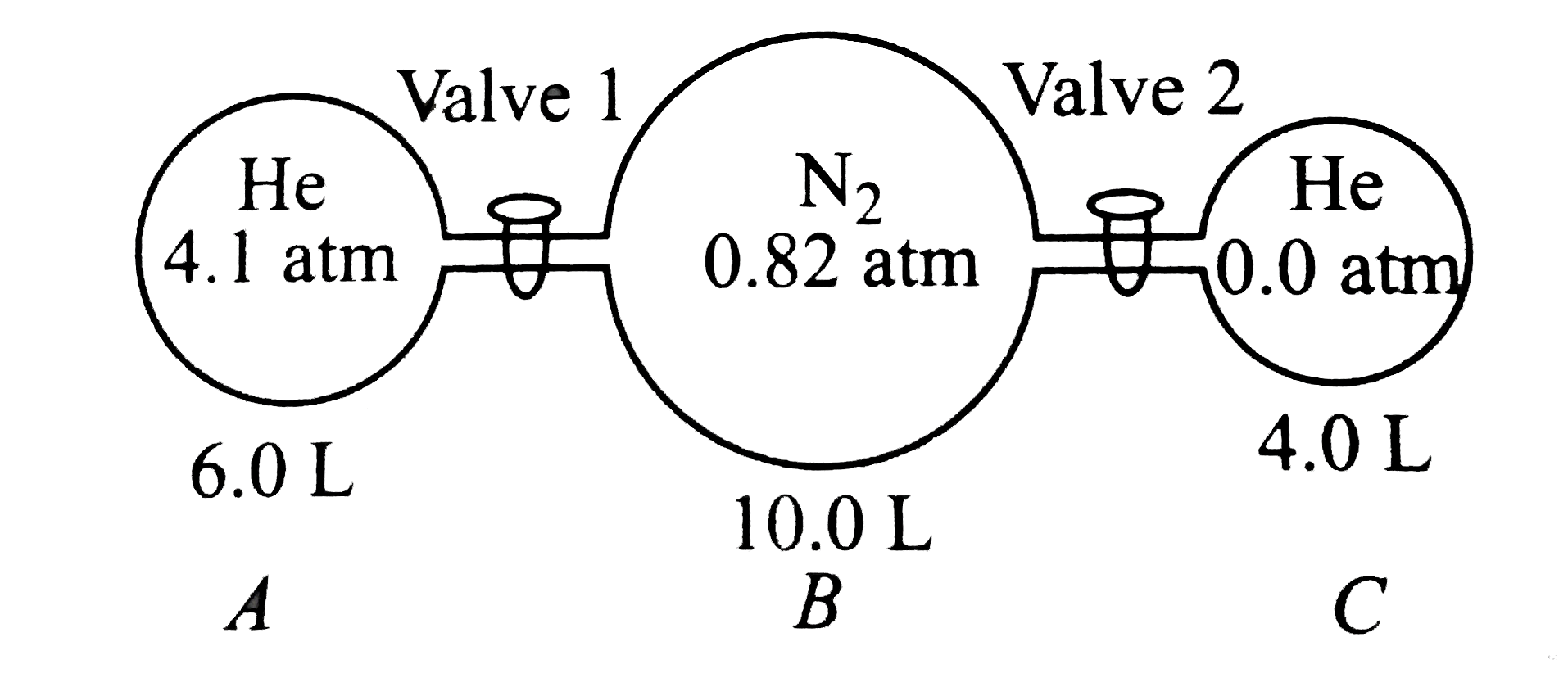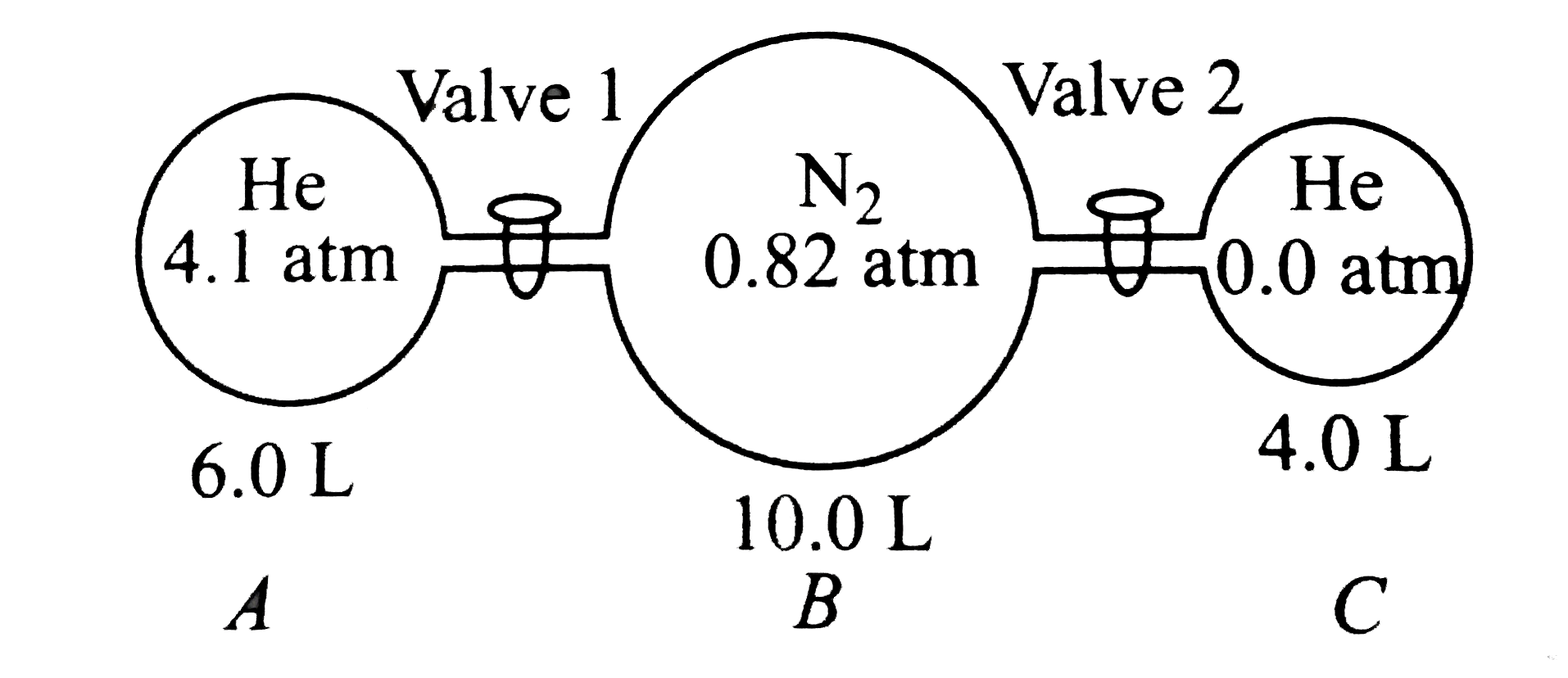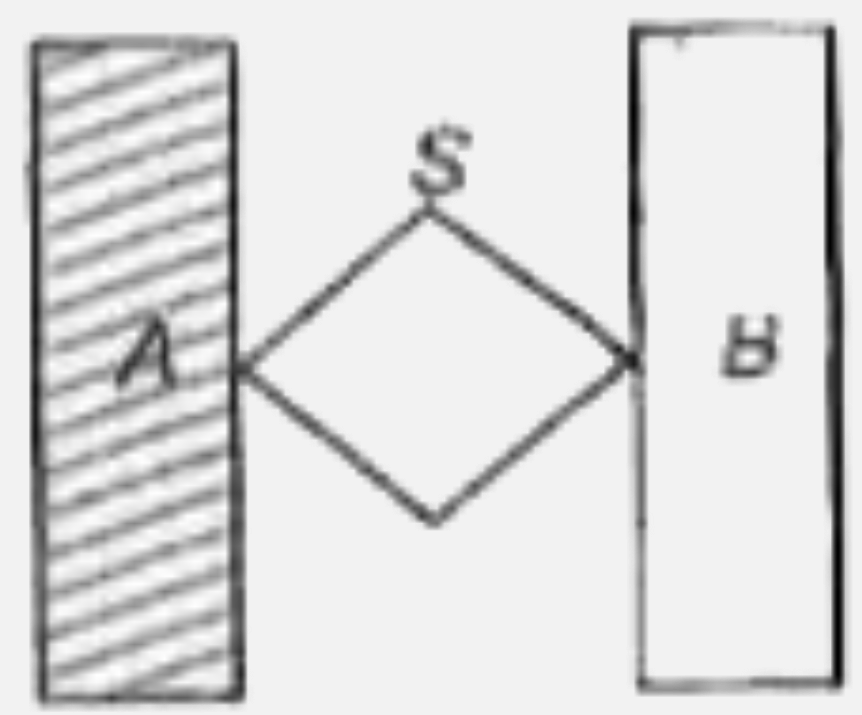The figure given below shows three glass chambers that are connected by valves of negligible volume. At the outset of an experiment, the valves are closed and the chambers contain the gases as detailed in the diagram. All the chambers are at the temperature of 300K and external pressure of 1.0atm.

What is the total pressure in chamber B after valve 1 is opened?
8.2Latm
−8.2atm
0
3.28Latm
Work done during the expansion of N2 at 0.82atm to chamber B at P=0
∴W=PV=0×4=0
Topper's Solved these Questions
- STATES OF MATTERBOOK - CENGAGE CHEMISTRY ENGLISHCHAPTER - STATES OF MATTEREXERCISE - Exercises (Multiple Correcttype)
32 Videos
- STATES OF MATTERBOOK - CENGAGE CHEMISTRY ENGLISHCHAPTER - STATES OF MATTEREXERCISE - Exercises (Single Correct)
85 Videos
- STATES OF MATTERBOOK - CENGAGE CHEMISTRY ENGLISHCHAPTER - STATES OF MATTEREXERCISE - Linked Comprehensive
2 Videos
- SOME BASIC CONCEPTS AND MOLE CONCEPTBOOK - CENGAGE CHEMISTRY ENGLISHCHAPTER - SOME BASIC CONCEPTS AND MOLE CONCEPTEXERCISE - Archives Subjective
11 Videos
- STOICHIOMETRYBOOK - CENGAGE CHEMISTRY ENGLISHCHAPTER - STOICHIOMETRYEXERCISE - Archives Subjective
33 Videos
Similar Questions
The figure given below shows three glass chambers that are connected by valves of negligible volume. At the outset of an experiment, the valves are closed and the chambers contain the gases as detailed in the diagram. All the chambers are at the temperature of 300K and external pressure of 1.0atm.

Which of the following represents the total kinetic energy of all the gas molecules after both valves are opened?
(R=0.082atmLK−1mol−1=8.314JK_1mol−1)
View SolutionA given amount of gas A is confined in a chamber of constant volume. When the chamber is immersed in a bath of melting ice, the pressure of the gas is 100 cm Hg.
What is the temperature when the pressure is 10 cm Hg ?
View SolutionThree closed rigid vessels, A, B and C, which initially contain three different gases at different temperatures are connected by tube of negligible volume, without any energy transfer with surroundings. The vessel A contain 2 mole Ne gas, at 300 K, vessel 'B' contain 2 mole SO2 gas at 400 K and vessel 'C' contain 3 mole CO2 gas at temperature 500 K. What is the final pressure (in atm) attained by gases when all valves of connecting three vessels are opened and additional 15.6 kcal hear supplied to vessels through valve. The volume of A, B and C vessel is 2, 2 and 3 litre respectively
Given :R =2 calorie/mol-K,Cv(Ne)=3/2R,Cv(CO)=5/2RandCv(SO2)=3R
View SolutionTwo vessels are connected by a valve of negligible volume. One container, A has 2.8 g N2 at T1K. The other container, B is completely evacuated. The container A is heated to T2K, while container B is maintained at T23K . Volume of A is half that of B. If the valve is opened, then
View SolutionA valve between a 5 litre tank in which the gas pressure is 9 atm and a 10 litre tank containing gas at 6 atm is opened and pressure equilibration ensures at a constant temperature. What is the final pressure (in atm) in the two tanks ?
View SolutionTwo closed vessel A and B of equal volume of 8.21 L are connected by a narrow tube of negligible volume with open valve. The left hand side container is found to contain 3 mole CO2 and 2 mole of He at 400 K. What is the partial pressure of He in vessel B at 400 K?
(a)2.4 atm
(b)8atm
(c)12atm
(d)None of these
View SolutionConsider two insulated chambers (A,B) of same volume connected by a closed knob ,S. 1 mole of perfect gas is confined in chamber A. What is the change in entropy of gas when knob S is opened ?

View SolutionThe weight of one litre of a gas at latm pressure and 300K is 4g. At what temperature the weight of the gas is 4g when the pressure is made 0.5 atm and volume is 1 litre?
View SolutionWe have 0.5 g of hydrogen gas in a cubic chamber of size 3 cm kept at NTP. The gas in the chamber is compressed keeping the temperature constant till a final pressure of 100 atm. Is one justified in assuming the ideal gas law in the final state ? (Hydrogen molecules can be consider as spheres of radius 1Å).
View SolutionA cylinder closed at both ends is separated into two equal parts (45 cm each) by a piston impermeable to heat. Both the parts contain the same masses of gas at a temperature of 300 K and a pressure of 1 atm. If now the gas in one of parts is heated such that the piston shifts by 5 cm, then the temperature and the pressure of the gas in this part after heating is
View Solution
